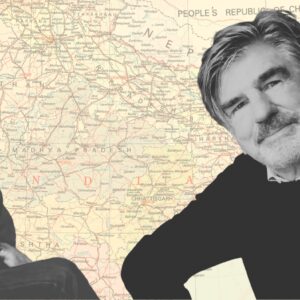
What If It Is Happening Here? Lessons From the Anti-Fascist Novel in Trump’s Second Term
David Renton Rereads Lewis and Roth in a New Era of Authoritarianism
When Donald Trump was elected in 2016, he changed the reading habits of the nation. George Orwell’s Nineteen Eighty-Four became the best-selling book of any genre on Amazon. Sinclair Lewis’s 1935 satire of a fascist takeover, It Can’t Happen Here, rose to 26th in the Amazon all-genre chart. Another second-time success was Philip Roth’s 2004 The Plot Against America, in which democratic institutions largely survive the far-right capture of the Presidency, but street Nazis are emboldened, and the government makes an alliance with Hitler.
Readers saw in these disparate books if not a blueprint exactly for what Trump would do, a way of comprehending some of the worst possible futures opening up ahead of them.
Literary critics were more cautious. Despite the novels’ success, most commenters insisted that their narratives illuminated only fitfully the events of Trump’s first term. The Plot Against America should be read for Philip Roth’s compelling voice, not for its flawed social criticism, Jacques Berlinerblau argued. Writing about It Can’t Happen Here, David Ulin cautioned that fiction shouldn’t be read as prediction, “If fascism were to come to America, it would be nativist in a different way.”
It’s worth asking again how well either Lewis or Roth—and the anti-fascist novel more generally—has anticipated the world around us.
Eight years later, and in the different circumstances of Trump’s second term, it’s worth asking again how well either Lewis or Roth—and the anti-fascist novel more generally—has anticipated the world around us. From the 1920s onwards, the novel was one of the ways in which anti-fascists challenged the right’s ascendancy. The relationship went both ways: novelists led physical anti-fascist campaigns, and anti-fascist activists expressed their fears through the medium of fiction.
In the 1920s, in Britain, one of the first anti-fascist campaigns was set up by a novelist, Ethel Carnegie Holdsworth whose Helen of Four Gates had been adapted into a film. In 1923, horrified by news from Italy, Holdsworth founded the National Union for Combating Fascism. The first English-language pamphlet warning of fascism was written by another novelist, Ellen Wilkinson. In the 1930s, when people all over Europe were refusing to believe the Nazis’ genocidal intent, British novelist Katharine Burdekin published Swastika Night, a dystopia in which fascists keep women like cattle.
Sinclair Lewis’s novel, published in 1935, is more realist in style, its imagined fascism much closer to hand. The book begins with the defeat of President Roosevelt. The villain of It Can’t Happen Here is Senator Berzelius (“Buzz”) Windrip, elected President in 1936. He governs through executive orders while Congress is reduced to an advisory role. Windrip claims it is the birthright of the United States to annex “all portions of Mexico which the US might from time to time find it necessary to take over.” Soldiers occupy the border with Canada. The new President benefits from a mood of backlash against intellectuals, “We don’t want all this highbrow intellectuality, all this book-learning,” one supporter declares. Surrounding him are the objects of 1930s kitsch, silk USA flags and Mickey Mouse figures. Windrip exhibits a child-like belief in the superiority of anyone who owns a million dollars. His idol is the richest man in America, notorious antisemite Henry Ford. “When he became President, he exulted, maybe he could get Mr. Ford to come to supper at the White House.”
Windrip’s success encourages any number of emulators eager to secure jobs with the new regime, a number of whom are former liberals or self-declared “reformers” who toady up to the new leader. Windrip is driven by insecurity. He needs to be loved and followed. In power, he demands not just assent but visible signs of public support, “louder, more convincing Yeses from everybody about him. Anyone who did not play valet to his ego he suspected of plotting against him.” The longer he remains in office, the less popular he becomes. He increasingly depends on a private militia, who “swagger brazenly” through the streets in uniforms.
Even where history and It Can’t Happen Here diverge, those differences tell us something about recent events. Crucial to Windrip’s emergence is the role played by his strategist, Lee Sarason, the President’s “satanic secretary.” A former journalist, Sarason’s eyes are “sparks at the bottom of two dark wells.” Eventually, he topples the President and leads society even further to the right. Trump doesn’t have one single man doing his strategic thinking for him, but one reason so many commentators fixated on Steve Bannon during Trump’s first term was that they saw him not just Trump’s guide but as his possible replacement.
In Lewis’s book, a population which has lived through the New Deal demands the taxation of the rich. Windrip comes to power by making dishonest promises to limit their power. In our own time, by contrast, it is the success of plutocracy and the seeming inability of any mainstream politician to imagine even small acts to limit their power which has encouraged the American oligarchs and made them greedy for more.
In Philip Roth’s The Plot Against America, Roosevelt is replaced not in 1936 but 1940 by “America’s international aviation hero,” Charles Lindbergh. The pilot storms into the Republican Convention as a charismatic outsider. He departs the event as Presidential nominee, the beneficiary of the mutual antagonism of rival factions. His subsequent election encourages any number of village Hitlers who torment the family of the novel’s protagonist.
In most respects, democratic institutions survive Lindbergh’s capture of power. Congress remains important, and not until late in the manuscript are any attempts made to restrict the speech of Democrats. There is no glut of Executive Orders, no clearing-out of cultural bodies, no rewriting of US history. Elections remain free. There are no seemingly no moves made against women, foreigners, or any racial minorities except for Jews.
The worst threat facing the latter is the relocation of a small minority of people from the northern cities to the Southern states which are the redoubt of Lindbergh’s movement. That move is narrated as sinister—the step before ethnic cleansing—but preparatory. In terms of using the state for violence, Roth’s imagined fascist USA does less in months than the new administration managed in its first weeks, in placing shackled green-card holders on deportation flights, in jailing students in immigration prison for editorials criticizing US foreign policy.
Lindbergh’s most significant evil is the role he plays in allying with the world’s greatest expansionist power, Nazi Germany. A peace-treaty is negotiated with Hitler, enabling him to deepen his war in the East. Further, by showing public approval to a foreign dictator who is carrying out acts of genocide, Lindbergh emboldens local racists, who carry out their own violence, threatening the family of the protagonist a youthful “Philip Roth.” “Fear presides over these memories, a perpetual fear,” Roth writes.
Books can be one instrument in the armory of our collective liberation, but we will need more than them.
After two years of Lindbergh’s government, these street racists are willing to riot—even assassinate one of the regime’s prominent critics. When that line is crossed, deep in the novel’s concluding sections, we are for the first time in Roth’s work in a future significantly worse than our own present day—imagine a January 6th movement which is not just primed, pardoned for any acts of violence, but has started them.
In many respects, Roth’s fascist USA feels further from the present than Lewis’ does. Lindbergh is lean, tall, handsome and athletic. Whenever he is threatened, he takes to the air. His is an earned charisma, not the bragging rights of a second-tier TV celebrity.
At the book’s end, fascism collapses under scarcely any pressure and leaves no trace behind. Peal Harbor happens, just a year late in this history. Bobby Kennedy is still assassinated. Roth narrates not a new form of politics, but a fever dream.
Neither of the protagonists of these two books is equipped to become a hero in conventional terms. At the center of Roth’s narratives are the thoughts of the young protagonist, seven at one point in the narrative, by the time of Lindbergh’s toppling a worldly nine. He is old enough to watch and to process events but not to take action. Meanwhile, the transition to dictatorship in It Can’t Happen Here is seen through the eyes of a sixty-year-old newspaper editor, pedantic, and liberal—Doremus Jessup, or “Dormouse,” as his wife calls him.
Yet even Jessup makes the journey from foreboding to clear sight. By the book’s end he has become almost a Tom Joad-figure. He forms, out of the material of the people around him, a small cell of dissidents who refuse to believe the lies the regime tells about itself. He shares his stories of Windrip’s corruption. He gives up his jobs as the editor of the town’s newspaper, that paper having been co-opted, and writes instead for the resistance. At the conclusion of Sinclair Lewis’ novel, the hostile government is toppling under the weight of the insatiable leader’s need to be loved, the cynicism of his followers, and the conflicts between the inner circle of the regime. Those who are used to freedom, Lewis suggests, will not tolerate for any length of time a dictatorship. The people rise up, successfully.
Trump’s second administration is going further and faster than his first. We cannot be assured that he will exit the stage at the end of four more years, or that Trumpism would end if he did. The world is worse placed that it was in 1936. There are not only two main far-right governments, but many. Even before Trump came to power, genocide had become again a part of state politics. We are at a moment of global climate breakdown, where this generation of politicians has the power to make the lives of many generations nastier, harder and shorter—and we are choosing Drill, Baby, Drill.
Compared to the monsters of our own times, Buzz Windrip feels a relatively small antagonist. It is happening here and going further than in fiction. “Everyone,” as Lewis warned, still feels “fear, nameless and omnipresent.” Books can be one instrument in the armory of our collective liberation, but we will need more than them.
David Renton
David Renton is a barrister and historian and the author of The New Authoritarians: Convergence on the Right.












